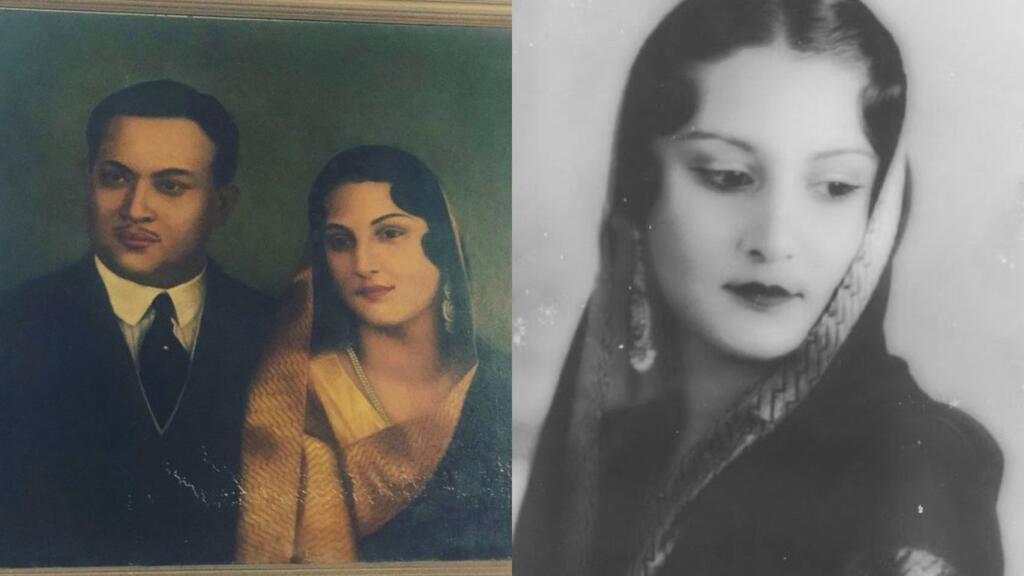Since independence, stories of Kashmir and Hyderabad joining India have been told year after year. But one incident that rarely comes to the lips of the general public is the story of a king’s decision, a queen’s indomitable courage, and the princely state of Tripura joining India.
The year was 1947, the struggle for independence was intensifying. On one hand there was the devastation caused by the partition of India, on the other hand there was the struggle of the princely states whether to join India or Pakistan. The situation was the same in the entire country from east to west and north to south. Some princely states were ready to merge with India, while some Nizams were eager to join Pakistan.
Tripura State, The Manikya Dynasty and Bengali Refugees
One of the sates in question was Tripura. Located in the Northeast of India, the state was ruled by the Manikya dynasty and its king was Bir Bikram Kishore Deb Burman. The British called this state Hill Tipperah, which also had a district called Tipperah. This state extended to Noakhali and Sylhet of present-day Bangladesh. When India was partitioned, the British lawyer Radcliffe, on the lines of Lahore, handed over Noakhali and Tipperah to Pakistan, despite the fact that there was a large Hindu population there.
The number of Bengali immigrants in Tripura increased after the Dhaka riots of 1941. It was during the riots that Tripura King Bir Bikram Kishore Deb Burman opened his borders to Bengalis. When there was a possibility of riots again in 1947, a large number of immigrants started taking refuge in Tripura.
Raja Bir Bikram understood that if the India-Pakistan partition was announced, riots would break out and the situation would become uncontrollable. Therefore, on 28 April 1947, he announced the merger of Tripura with India. To avoid any mistake, Raja Bir Bikram also informed the Secretary of the Constituent Assembly HVR Iyengar about his decision by sending a telegram.
The people of Tripura heaved a sigh of relief with this decision of Raja Bir Bikram, but destiny had something else in store. 19 days after the decision to merge Tripura with India, i.e. on 17 May 1947, Raja Bir Bikram suddenly died. The crown prince of Tripura, Kirit Bikram Kishore Manikya, was not old enough to take over the throne. Therefore, Queen Kanchan Prabha Devi took the reins of power in her hands by forming a Regency Council (temporary government after the death of the king).
Queen Kanchanprabha and the conspiracy against her
Tripura was now kingless, and the power was in the hands of Queen Kanchan Prabha. In such a situation, conspiracies were hatched to seize power. One of these conspiracies hatched within Tripura itself. King Bir Bikram’s half-brother Durjay Kishore, who was dreaming of becoming the king, joined hands with separatist Mohammad Abdul Barik Khan (also known as Gedu Mia) to remove Queen Kanchanprabha from power. Gedu Mia had formed a political party called ‘Anjuman-e-Islamia’ supported by the Muslim League as he pushed for Tripura’s merger with Pakistan.
Durjay Kishore had hoped that he would become the king after the merger of Tripura with Pakistan, while Gedu Miyan wanted to merge Tripura with Pakistan. But the dreams of both of them were soon shattered. On 11 June 1947, Queen Kanchan Prabha told the public that Maharaja Bir Bikram had already decided to merge the state of Tripura with India.
This news spread like wildfire across the country. Along with this, the news also spread that preparations were being made to attack Tripura and Muslims were being incited by distributing pamphlets in East Pakistan. There were such reports in the newspapers as well, although they also included rumours. But it was difficult to verify the truth of these reports.
Merger of Tripura in the Indian Union
Queen Kanchan Prabha took decisive action, she took the resignation of the ministers who supported Durjay Kishore and banished them from the state. Some ministers were banned from entering Tripura and the Regency Council was dissolved as she declared herself the sole regent. Queen Kanchan Prabha knew that if action was not taken quickly, the situation in Tripura could become like that of Kashmir. She went to Delhi and met Sardar Patel and told him about the situation in Tripura. Sardar Patel assured her of all possible security and military assistance.
Sardar Patel sent Assam Governor Akbar Haidri to Tripura to keep the situation under control. As soon as the situation was under control, Rani Kanchan Prabha formally announced the merger of Tripura with India on November 11, 1947. Then on September 9, 1949, she signed the merger agreement with the Government of India. On October 15, 1949, the princely state of Tripura ceased to exist and became a part of India. In 1956, Tripura got the status of a Union Territory and in 1972 it was given the status of a full state.
What happened to Durjoy Kishore and Gedu Mia?
Durjoy Kishore had already resigned and later had to leave the state. Gedu Mia and his family fled to Comilla in East Pakistan. Their house in Agartala was confiscated by the government and today houses the Regional Coaching Centre Agartala.
